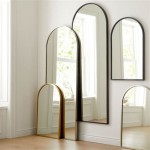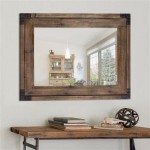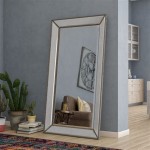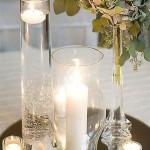The Enduring Allure of Vanity and Mirror: A Comprehensive Exploration
Vanity and mirrors have a historically intertwined relationship, serving both functional and aesthetic purposes across various cultures and eras. From ancient civilizations utilizing polished metals to reflect their likenesses, to modern individuals meticulously crafting their image in front of intricately designed vanity setups, the desire to perceive and refine one's appearance has remained a constant human characteristic. This article will delve into the multifaceted aspects of vanity and mirrors, examining their historical significance, design evolution, and psychological impact.
The human preoccupation with appearance is not a new phenomenon. Archaeological evidence reveals that even rudimentary forms of mirrors existed thousands of years ago. These early mirrors, often crafted from materials such as polished obsidian or copper, provided a basic reflection, allowing individuals to observe and adjust their physical presentation. The development of sophisticated mirror-making techniques significantly influenced the construction of vanity spaces, transforming them from simple grooming areas into elaborate displays of personal style and social standing.
Historical Evolution of Mirrors and Vanity Spaces
The evolution of the mirror is inextricably linked to advancements in metallurgy and glassmaking. Early mirrors, as mentioned, were often constructed from polished metals. These surfaces, though reflective, were prone to tarnishing and offered a less-than-perfect image. The development of glass mirrors, particularly through the use of mercury amalgamation in the late Middle Ages and Renaissance, revolutionized the technology. These new mirrors offered significantly clearer and brighter reflections, contributing to a heightened sense of self-awareness and a greater focus on personal appearance.
Simultaneously, the concept of the "vanity" began to evolve. Initially little more than a simple box or table used for storing cosmetic items, the vanity gradually became a dedicated space within the home. The rise of the aristocracy and the burgeoning merchant class led to an increasing emphasis on personal adornment and display. Vanities became more elaborate, incorporating drawers, compartments, and, crucially, mirrors. These early vanities were often custom-made pieces, reflecting the wealth and status of their owners.
During the 17th and 18th centuries, the vanity reached its zenith of opulence. French court culture, particularly during the reign of Louis XIV, significantly influenced trends in fashion and interior design. Vanities became extravagant displays of craftsmanship, adorned with intricate carvings, gilded details, and luxurious fabrics. The mirrors incorporated into these vanities were often large and ornate, further enhancing the sense of grandeur. These elaborate spaces were not merely for grooming; they were also stages for social performance, where individuals could meticulously construct their public image.
The Industrial Revolution brought about significant changes in mirror production and vanity design. Mass production techniques made mirrors more accessible to the general population, moving them beyond the exclusive domain of the wealthy. Vanity designs became more streamlined and functional, reflecting the changing needs of a rapidly industrializing society. The invention of the silvered glass mirror in the 19th century further improved mirror quality and affordability.
In the 20th and 21st centuries, the vanity has continued to evolve. While some individuals still opt for traditional, ornate designs, contemporary vanities often prioritize functionality and minimalist aesthetics. The integration of technology, such as adjustable lighting and built-in power outlets, has further enhanced the user experience. The rise of social media and the curated online presence have also contributed to a renewed emphasis on personal appearance, leading to a resurgence in the popularity of vanity spaces.
Design Elements and Functionality of Vanities and Mirrors
The design of a vanity and the type of mirror incorporated are critical to the overall functionality and aesthetic appeal. Various design elements influence the practicality and usability of the space, catering to specific user needs and preferences.
Mirror Size and Shape:
The size and shape of the mirror are paramount. A larger mirror provides a more comprehensive view, facilitating tasks such as makeup application and hairstyling. Shapes vary from traditional rectangles and ovals to more contemporary circles and asymmetrical designs. The choice depends largely on the overall style of the vanity and the desired aesthetic.Lighting:
Adequate lighting is essential for effective grooming. Poor lighting can distort colors and make it difficult to achieve a polished look. Vanity mirrors often incorporate integrated lighting, such as LED bulbs or strip lights, which provide even and consistent illumination. The color temperature of the lighting is also important; natural daylight is generally considered the ideal for makeup application.Storage:
A well-designed vanity will incorporate ample storage space for cosmetic items, tools, and accessories. Drawers, shelves, and compartments help to keep the space organized and clutter-free. The type and configuration of storage will depend on the user's specific needs and the amount of space available.Height and Ergonomics:
The height of the vanity and the mirror should be ergonomically appropriate, ensuring that the user can comfortably stand or sit while grooming. A vanity that is too high or too low can lead to strain and discomfort. Adjustable-height stools or chairs can help to customize the space for individual needs.Style and Aesthetics:
The style of the vanity and mirror should complement the overall design of the room. Options range from traditional and ornate to modern and minimalist. Materials, finishes, and decorative details all contribute to the overall aesthetic. Careful consideration should be given to the colors, textures, and patterns used in the space.Modern vanity designs often incorporate features such as magnifying mirrors, adjustable lighting settings, and Bluetooth connectivity, reflecting the increasing integration of technology into everyday life. Furthermore, sustainable materials and environmentally friendly construction methods are becoming increasingly prevalent in vanity design, reflecting a growing awareness of environmental concerns.
Psychological and Sociocultural Implications
The relationship between vanity, mirrors, and the individual extends beyond mere functionality and aesthetics. It delves into complex psychological and sociocultural dynamics that shape self-perception and social interaction.
Self-Perception and Body Image:
Mirrors play a significant role in the formation of self-perception and body image. Regular reflection can influence how individuals perceive their physical appearance, impacting self-esteem and confidence. While positive self-reflection can be empowering, excessive focus on perceived flaws can lead to anxiety and body image issues. The societal emphasis on beauty standards, often perpetuated through media and social media, can further exacerbate these concerns.Social Performance and Identity:
The vanity serves as a stage for social performance, where individuals prepare themselves for public interaction. The act of grooming and self-adornment is not merely about physical appearance; it is also about constructing and presenting a particular identity to the world. The choices individuals make regarding their appearance reflect their values, beliefs, and aspirations. The vanity, therefore, becomes a space where individuals negotiate their identity and prepare to engage in social interactions.Cultural Significance:
The significance of vanity and mirrors varies across cultures. In some cultures, elaborate grooming rituals are highly valued and deeply ingrained in social practices. The vanity may hold a central place in the home, symbolizing status, beauty, and cultural identity. In other cultures, a more minimalist approach to personal adornment may be preferred. Understanding these cultural nuances is essential for appreciating the diverse ways in which individuals relate to vanity and mirrors.The Influence of Social Media:
The rise of social media has significantly impacted the relationship between vanity, mirrors, and the individual. The curated online presence has led to a heightened focus on aesthetics and self-presentation. Individuals often use filters and editing tools to enhance their appearance, creating a distorted sense of reality. This can lead to unrealistic expectations and a perpetual cycle of self-criticism. The constant exposure to idealized images on social media can also negatively impact self-esteem and body image.In conclusion, the study of vanity and mirrors involves aspects of history, design, and psychology. The evolution of these objects and spaces reflects a continuous interaction between technological advancements, cultural shifts, and the fundamental human desire for self-awareness and self-presentation.

Rovaurx 46 7 Makeup Vanity Table With Lights And Mirror 5 Drawers Modern Dressing Desk White Com

Rovaurx Makeup Vanity Table With Lighted Mirror Desk Storage Shelf And 4 Drawers Bedroom Dressing 10 Led Lights White Rszt104w Com

Boyel Living 72 In W X 36 H Rectangle Frameless Wall Mount Bathroom Vanity Mirror With Defogging Function Glass Polished Kf Md04 7236sf2 The Home Depot

Cooljeen Large Hollywood Vanity Mirror With Lights Wall Mount Tabletop Metal White Com

Apmir 40 In W X 32 H Large Rectangular Tempered Glass Framed Wall Bathroom Vanity Mirror Matte Black B10080 The Home Depot

Max1 Pro Hollywood Vanity Mirror Large Size White Achieve Beauty Perfection Luxfurni

Allura Vanity Dresser W Mirror Gray Homelegance Furniture Cart

Yitahome Vanity Desk Set With Led Lighted Mirror And Power White

Diva Silver Large Vanity Table Mirror With Storage And Bluetooth By Furniture City S
Tresanti Alexandra Vanity Table With Led Lighted Mirror Costco







